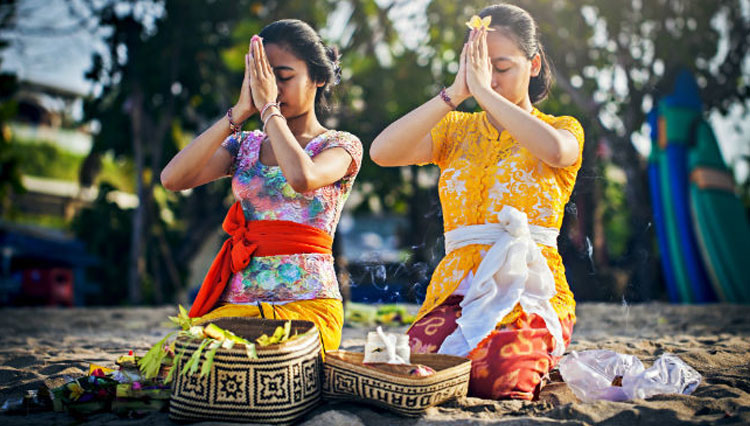Go Non-Touristy Guide to Visiting Bali:
Affordable Packages, Luxury Villas, and Island Hopping Adventures
Bali is often seen as the land of sunsets, yoga retreats, and infinity pools, but it has much more depth than most tourist brochures suggest. If you search for affordable Bali travel packages with flights, luxury Bali villa holidays, or Bali island hopping holiday packages, you will notice that most guides highlight only the same resorts and crowded beaches. The truth is that Bali rewards travelers who step off the beaten path and seek out authentic experiences.
This guide is designed to help you travel smarter. You will discover hidden gems, cultural festivals, practical advice on when to visit, and even food recommendations that go beyond resort dining. You will also find useful tips on what to pack, what to respect, and what to avoid. Many travelers make the mistake of focusing only on Bali’s surface, but the most memorable moments often come from exploring places and traditions that locals value.
By the time you finish reading, you will be able to plan a holiday that balances affordability, comfort, and authenticity. You will know when to book a package, when to splurge on a villa, and when to explore Bali’s surrounding islands.
Discover the best Bali experiences at GoTicketless.co.uk

Hidden Gems and Lesser-Known Attractions
Most tourists stop at Kuta or Ubud, yet Bali has quieter destinations that feel more genuine. Sidemen Valley, located in East Bali, offers a glimpse of rural life. The rice terraces stretch across the hills, and unlike Tegallalang, there are fewer crowds. Walking through the valley, you often meet farmers working the fields, giving you a sense of how deeply tied to agriculture Balinese life remains.
On the northeast coast, Amed is a hub for diving and snorkeling. The waters are calmer than the south, and the shipwreck of the USS Liberty in nearby Tulamben is one of Indonesia’s best underwater sites. Amed is also less developed, so evenings are peaceful, with more warungs than beach clubs.
In the north, Lovina Beach is known for dolphin watching. Boats head out at dawn, and while some tours are crowded, you can find smaller operators who provide a more respectful experience. The village atmosphere is still strong here, with traditional fishing boats lining the beach.
If you prefer mountains, Munduk is a standout. Surrounded by waterfalls, coffee plantations, and cool air, it feels different from coastal Bali. Hiking trails lead to hidden cascades, and the slower pace is perfect for travelers who value nature. Another lesser-known site is Tirta Sudamala, a purification temple in Bangli. Unlike Tirta Empul, it is mostly used by locals, so the atmosphere is quieter and more authentic.

Cultural Events and Traditions in Bali
Balinese culture is deeply rooted in Hindu rituals and community traditions. Visitors often hear about Nyepi, Galungan, and the Bali Arts Festival, but there are many lesser-known events and customs that shape daily life. Respecting these traditions adds depth to your trip and creates more meaningful connections.
Major Cultural Events
-
Nyepi (March): The Balinese New Year. The island shuts down completely for 24 hours. Streets go silent, even the airport closes, and tourists stay inside their hotels. The day before, villages hold parades with giant papier-mâché demons called ogoh-ogoh, burned to chase away evil spirits.
-
Galungan and Kuningan: Held every 210 days. Families honor ancestors, villages decorate with tall bamboo poles called penjor, and temples hold ceremonies. Streets become lined with offerings, making this one of Bali’s most beautiful times.
-
Bali Arts Festival (June–July): A month-long celebration in Denpasar featuring traditional dance, gamelan music, and crafts. It’s a chance to see authentic performances beyond tourist shows.
Lesser-Known Traditions Not in Most Guidebooks
-
Ngaben (Cremation Ceremony): A powerful community ritual where families cremate their loved ones in colorful, elaborate ceremonies. These are public and sometimes tourists are welcome to watch respectfully.
-
Mekare-kare (Battle of Pandan): A ritual in Tenganan village where men duel with thorny pandan leaves as part of a festival honoring the god of war. Rarely seen by outsiders, it reflects the island’s ancient customs.
-
Odalan (Temple Anniversary): Every Balinese temple has its own birthday celebrated with offerings, dance, and gamelan music. These happen across villages almost weekly, and visitors who stumble upon one often describe it as their most authentic memory.
-
Melasti Ceremony: A purification ritual held before Nyepi, where villagers bring temple objects to the sea for cleansing. Long processions of people dressed in traditional white clothing walk together toward the ocean.
-
Traditional Tooth Filing Ceremony: Called Metatah, this rite of passage for Balinese Hindus symbolizes control over negative emotions. It is a private family event, but in villages, outsiders are sometimes invited to observe respectfully.
Cultural Etiquette to Remember
-
Always greet with a smile.
-
Use your right hand when giving or receiving.
-
Cover shoulders and knees when entering temples, wear a sarong and sash.
-
Do not interrupt ceremonies or block processions.
-
Remove shoes before entering homes.
-
Be patient, as ceremonies and rituals can affect daily routines.
Attending festivals and respecting customs transforms your trip. Instead of only seeing Bali as a destination for beaches and nightlife, you begin to understand how spirituality, art, and tradition shape everyday life on the island.

When to Visit Bali: Best and Worst Seasons
Bali’s climate is divided into two main seasons. The dry season runs from April to September and is the most popular time to visit. Days are sunny, humidity is lower, and outdoor activities such as hiking or diving are more comfortable. Villas and resorts are in high demand during this period, especially for weddings and honeymoons.
The wet season lasts from October to March. Rain is common, often heavy, but it usually comes in short bursts rather than all-day storms. This period is less crowded, and accommodation prices drop, which makes it attractive for those looking for cheap Bali holiday deals. The rain also makes the island’s landscapes greener and more vibrant.
The only period that many recommend avoiding is late December to early January. Prices are at their highest due to international holidays, and rain is heavy. If you want to balance weather and value, May, June, and September are the best months to plan your trip.
Bali Weather and Clothing Recommendations
Bali’s tropical climate is warm year-round, but rainfall and humidity change with the seasons. Knowing what to expect helps you pack better and plan your activities with comfort.
Month-by-Month Weather in Bali
-
January: Heavy rain, high humidity, frequent storms.
-
February: Still wet, slightly less rainfall than January.
-
March: Wet season tapers off, Nyepi often occurs.
-
April: Start of dry season, sunnier days.
-
May: Excellent weather, fewer tourists.
-
June: Dry, sunny, great for outdoors.
-
July: Peak season, busy but reliable weather.
-
August: Best dry month, but crowded and pricey.
-
September: Dry and warm, ideal balance of cost and crowds.
-
October: Rain returns, still plenty of sun.
-
November: More rain, quieter tourism.
-
December: Rainy, humid, expensive due to Christmas.
What to Wear by Season
Dry Season (April–September):
-
Cotton or linen clothing.
-
Sunglasses, sunscreen, hat.
-
Sandals or walking shoes.
-
Light sweater for cooler highlands.
Wet Season (October–March):
-
Quick-dry shirts and trousers.
-
Light rain jacket or poncho.
-
Waterproof sandals or shoes.
-
Spare clothes for day trips.
Year-Round for Temples:
-
Sarong and sash for shoulders and knees.
-
Modest clothing in rural areas.

Best Bali Activities by Season
Dry Season (April–September)
Clear skies and low humidity make this the best period for outdoor adventures.
-
Surfing on the west coast at Kuta, Canggu, Uluwatu.
-
Diving and snorkeling with top visibility at Amed and Nusa Penida.
-
Sunrise hikes on Mount Batur.
-
Bali Arts Festival in June–July.
-
Island hopping to Nusa Penida and the Gilis with smooth seas.
Wet Season (October–March)
Rain creates lush scenery and fewer crowds.
-
Rice terrace photography in Sidemen and Tegalalang.
-
Waterfall trips to Sekumpul and Tegenungan.
-
Surfing on east coast spots like Nusa Dua and Keramas.
-
Nyepi in March, the Day of Silence.
-
Quieter temples and cultural immersion.
Shoulder Months (April, May, September, October)
Balanced weather, manageable prices, fewer crowds.
-
Beach relaxation in Sanur and Jimbaran.
-
Yoga and wellness retreats in Ubud and Canggu.
-
Temple visits without peak crowds.
-
Search a the perfect Bali budget-friendly holiday packages on GoWorldwide.co.uk for maximum value.

Food and Drink Not to Be Missed
Balinese cuisine is deeply tied to tradition. Babi guling (roast pig) and bebek betutu (slow-cooked duck) are ceremonial favorites. Nasi campur provides a mix of vegetables, meat, peanuts, and sambal, letting you taste a variety of flavors in one dish.
Local drinks include jamu, a herbal tonic made with turmeric and ginger, and Bali coffee, often brewed strong and sweet. Arak, a local spirit, is popular but should be consumed carefully.
Eating at small warungs not only saves money but also gives you a closer look at everyday Balinese food culture.
Five Off-the-Beaten-Track Places to Eat in Bali
-
Warung Bintangbali (Ubud): Local dishes with rice field views, average £6.
-
Made’s Warung (Seminyak): Famous for nasi campur, average £8.
-
Bali Asli (Karangasem): Heritage cooking with Mount Agung views, average £12.
-
Warung Bu Mi (Canggu): Buffet-style warung, average £4.
-
Ayam Betutu Gilimanuk (Denpasar): Known for ceremonial chicken, average £7.
These spots are affordable, authentic, and far from the tourist-heavy dining scene.

Must-Do’s When Visiting Bali
-
Visit Uluwatu Temple at sunset: The Kecak fire dance performed against ocean cliffs is one of Bali’s most dramatic cultural experiences. It connects you with Hindu mythology and offers unmatched views.
-
Climb Mount Batur for sunrise: The early start is demanding, but the reward is breathtaking. Watching the sun rise over Lake Batur with Mount Agung in the distance is unforgettable.
-
Swim at Sekumpul and Munduk Waterfalls: Unlike crowded waterfalls near Ubud, these require a bit of effort to reach. The journey adds to the adventure, and the scenery is far more rewarding.
-
Take a cooking class in Ubud: Learning to make sambal and traditional dishes gives you insight into daily Balinese life. Food is central to culture, and this experience is both tasty and educational.
-
Stay overnight on Nusa Penida: Day trips are common, but staying longer allows you to enjoy the island’s dramatic coastline and quiet beaches without the crowds of daily visitors.
Must-Not-Do’s When Visiting Bali
-
Do not touch people’s heads: In Balinese culture, the head is sacred. Even children’s heads should not be touched casually. Respecting this avoids offense.
-
Do not enter temples without covering shoulders and knees: Temples are sacred spaces, and dressing modestly shows respect. Many sites provide sarongs, but bringing your own is thoughtful.
-
Do not step on offerings: Canang sari, small baskets of flowers and incense, are placed daily on sidewalks and steps. Stepping on them is disrespectful to local rituals.
-
Do not drink tap water: Water is not safe for drinking. Stick to bottled or filtered water to avoid illness. Even ice should be from trusted sources.
-
Do not bargain aggressively: Bargaining is normal in markets, but being pushy or rude offends sellers. Smile, offer a fair price, and remember a little money means more to them than to you.
By following these must-do’s and don’ts, you gain deeper respect for Bali’s traditions and avoid mistakes that many tourists unknowingly make.

Affordable Bali Travel Packages with Flights
Affordable Bali travel packages with flights are ideal for families and first-time visitors. They bundle hotels, airport transfers, and flights into one price, often saving money compared to booking separately.
During the wet season, packages include bonuses like free nights or spa credits. In the dry season, demand rises, so early booking is essential. You can find a range of cheap Bali holiday deals on GoWorldwide.co.uk, making it easy to plan a trip without overspending.
Luxury Bali Travel Experiences with Villas
Bali’s private villas are one of its biggest attractions. They feature infinity pools, lush gardens, and in-villa chefs. Many honeymooners choose them for privacy, but they also suit groups and families who want more space.
Prices vary, but compared to luxury stays in other countries, Bali villas often feel like great value. You can browse exclusive Bali villa stays with GoWorldwide to find options that include spa services, private yoga sessions, or beach access.
Bali Island Hopping Travel Packages
Island hopping packages make it easy to extend your trip. They usually cover boat transfers, accommodation, and tours.
-
Nusa Penida has dramatic cliffs and beaches.
-
Nusa Lembongan is relaxed, ideal for snorkeling.
-
The Gili Islands offer car-free charm and nightlife.
To simplify planning, book multi-island Bali holiday packages on GoWorldwide, which combine Bali with nearby islands for a seamless adventure.

Final thoughts on visiting Bali:
Bali is an island that offers something for every traveler, whether you want to escape into the quiet rice fields of Sidemen, join in colorful temple festivals, or spend your days hopping between islands with white sand beaches. Beyond the familiar tourist spots, Bali reveals itself through its hidden gems, authentic food, and cultural traditions that still guide daily life.
The weather plays an important role in shaping your experience. The dry season brings perfect outdoor conditions, while the wet season offers quieter temples, lush landscapes, and better value. Knowing what to pack and when to visit helps make your holiday smoother and more enjoyable.
Food is another part of Bali’s identity that should not be overlooked. From ceremonial dishes like babi guling to herbal drinks like jamu, meals tell the story of community and tradition. Eating at small warungs or trying one of the recommended off-the-beaten-track restaurants gives you more than just a meal, it gives you insight into the island’s soul.
Respecting cultural customs, observing rituals, and following simple must-do’s and don’ts not only help you avoid mistakes but also open the door to more meaningful interactions. Locals notice when visitors show respect, and it often leads to warmer, more genuine experiences.
Whether you are searching for affordable Bali travel packages with flights, planning to indulge in luxury Bali villa holidays, or extending your adventure with Bali and Gili Islands travel deals, you will find options that fit your style and budget.
Bali rewards those who slow down, look closer, and travel thoughtfully. If you are ready to book your own journey, GoWorldwide.co.uk makes it simple to compare packages, choose the right time to visit, and start planning an unforgettable holiday.



